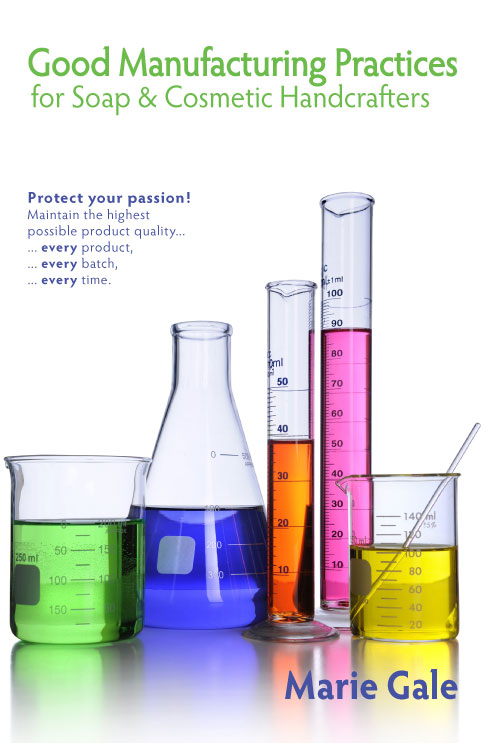You might wonder, What’s the point of going to all the trouble of following good manufacturing practices? After all, your products are great, right?
The whole point of implementing good manufacturing practices is to ensure that your great product is always great: every batch, every bar, every time. GMP is there to address and control every factor before it can adversely affect your product quality.
Over the years, GMP guidelines have developed from real-world experience. They are a guide to avoid all the things that could (and probably have) gone wrong in production facilities, big and small:
- Mix-ups of materials or packaging
- Omission of ingredients
- Contaminants getting into a product (dust, insects, bacteria)
- Poor-quality or mislabeled ingredients
- Missing or incomplete written procedures and documentation
- Untrained workers
- Equipment that isn’t clean or calibrated
It’s a lot easier to have those problems in a large, commercial, factory-like setting where many people are participating in the process. However, the same principles still apply to a one-man show.
Of course, you probably intuitively address many of the issues that can be big problems in a commercial facility, just because of the close-up, hands-on methods employed in small production.
- You probably don’t think too much about whether there are mice in your mixing area, because you have already taken steps to keep mice out of your house and shop as part of your life in general.
- You can, and probably do, visually inspect every ingredient before you add it, and every aspect of your production while it’s ongoing. That’s a big difference from big automated factories where much of what’s going on is out of sight.
- When it comes to actual production, you already know what does or doesn’t affect your product quality, and you make sure everything is done as it should be.
It’s because of these factors that handcrafted soap and cosmetics are generally very high quality, with little variance in the different batches and products.
Why Now?
If you’ve been following the changes from the Modernization of Cosmetic Regulations Act (MoCRA), you may already know that Good Manufacturing Practice (GMP) regulations are coming. The FDA is currently working on the official rules, but it will still be a while before they’re published and take effect.
Yes, there will be an exemption from the regulations for small businesses. But that doesn’t mean that GMP doesn’t apply to you regardless of the size of your business. It also doesn’t mean that should wait until the official rules go into effect to get reasonable GMP into place in your operation.
In fact, if you’re already making safe, high-quality products, you may already be practicing good manufacturing — at least informally.
The key now is to take what’s in your head and put it in writing.
Written procedures and records are what turn “good habits” into good manufacturing practices.
Core Parts of GMP
Whether you’re running a big lab or crafting in your kitchen, GMP comes down to just a few core components:
- Suitable facilities, well maintained in a clean and orderly manner
- Appropriate equipment, correctly maintained
- Raw materials identified, stored, examined, and inventoried to ensure they meet appropriate specifications and do not become contaminated
- Suitably trained personnel with adequate cleanliness and protective gear
- Written documentation and control procedures for all aspects of manufacturing
- Checks, testing or other controls to make sure ingredients and products meet required standards
- Internal audits to ensure everything is working as it should
- A system in place to handle complaints, adverse events, and (heaven forbid!) any product recalls.
- Written documentation of all procedures and processes, and permanent record keeping.
If this sounds like a lot, don’t panic. You probably already do many of these things — but you probably don’t have them written down.
Where to Start?
You could start anywhere, but I would recommend starting with the part you probably already have most in place—making your products. (#5 on the above list)
1. Master Formula
Start with either your best seller OR the next product that you make, and create a Master Formula document. I expect you have the basics written down, but now expand it to include everything there is to know using that formula to make that product, including:
- All the ingredients, with amounts by percentage by weight (that way you can easily calculate different batch sizes as needed)
- Detailed specifications for each ingredient (as needed) so you are sure you have the right ingredient
- The step-by-step process for making the product
- Any checks that should be made during manufacturing, such as specific temperatures to be reached, what it should look like, or how to tell if emulsion or trace has been reached.
- Type of bottle, jar, or mold to use, and how to fill it.
- Any finishing steps (i.e. cutting and curing soap)
- A sample of the label for the product
When you are finished you should have something that a reasonably trained person could use to make your product perfectly – just like you do. And when I say reasonably trained, I mean knowledgable about basic production procedures and able to use the necessary equipment … not already familiar with, “This is how we do things around here.”
2. Batch Record
A Batch Record tracks the making of an actual batch from the master formula. It’s a fill-in form you can use to document your manufacturing as you go.
After you have your Master Formula for the product, create a fill-in version as your Batch Record. It should have check boxes, and fill-in spaces to record what was actually done as you made the product, such as:
- Name of the product, date, batch size and assigned batch number.
- The list of ingredients and measurable amounts for each (not percentages, but the weight of each item to make the desired batch size).
- A place to check off each ingredient as it was added. (If you are tracking your raw ingredients, make a line to add the lot number.)
- A place to check off each step as it was completed.
- Where temperature or other benchmarks need to be met, leave a space to enter what the temperature was, or what was observed.
- What bottle, jar or mold was used.
- How many units were filled or produced
- A sample of the ACTUAL label that was used on the product.
You’ll have to adapt this list as appropriate for your particular product … the batch records for lotions, soaps and bath bombs will have different steps.
Once you have it created, you can print out a copy (or create a digital copy) each time you make that product. Complete the form as you go. Now you have a permanent record of what was done — and that piece of GMP is in place.
3. Rinse and Repeat
Repeat steps 1 and 2 for each of the products you make!
Final Thoughts
If you’ve ever caught yourself wondering:
- “Now what was it that I did last time that worked so well?”
- “When did I make this bottle of lotion?”
- “How long has that batch of soap been curing?”
- or ….“Now, where was I?”
… and you didn’t instantly have the answer in your written documentation, then you need to work on your good manufacturing practices!
Remember, GMP is not about bureaucracy — it’s about building trust in your products and confidence in yourself as a maker.



Leave a Reply